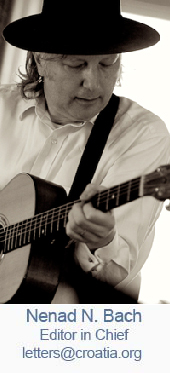
Sponsored Ads
|
» Home
» Entertainment » Bunjevci Croats from Backa and their Christmas traditions expressed in straw and cakes
» Home
» Education » Bunjevci Croats from Backa and their Christmas traditions expressed in straw and cakes
» Home
» Culture And Arts » Bunjevci Croats from Backa and their Christmas traditions expressed in straw and cakes
» Home
» Croatian Cuisine » Bunjevci Croats from Backa and their Christmas traditions expressed in straw and cakes
» Home
» Religion » Bunjevci Croats from Backa and their Christmas traditions expressed in straw and cakes
| Bunjevci Croats from Backa and their Christmas traditions expressed in straw and cakes |
| By Nenad N. Bach and Darko Žubrinić |
Published
12/6/2014
|
Entertainment , Education , Culture And Arts , Croatian Cuisine , Religion
|
Unrated
|
|
|
|
Christmas cakes and the art in straw among Bunjevci Croats in Bačka, part 1
With this article we wish you a merry Christmas and a Happy New Year. 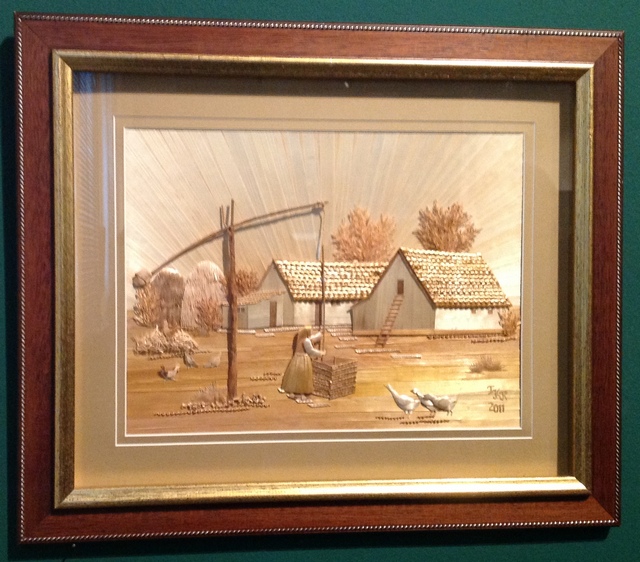 The works of art on this web page are exhibited in Ethnographic Museum of Croatia's capital Zagreb until January 20th 2015.
Naive straw work
Straw work is a unique naive art form which originates from the rich folk art of the Bunjevci-Croats settled in the north of Bačka.
Its origins can be traced to the female shepherds who guarded cattle on stubble after harvest more than 100 years ago. To make time shorter, they made rings and different ornaments (beads) by entwining the golden wheat fibres.
During Dužijanca, a working family celebrating the end of wheat harvest, beads were used to decorate the attires of the young and during the church ceremony of experssing gratitude to God, golden tiaras of crowns were brought to the altar in token of gratitude.
In Tavankut, a village near the town Subotica, the self-taught women nourish and preserve this naive art skill by entwining beads and making paintings out of straw which portray specific motifs and themes from the life of the Bunjevci-Croats.
A special incentive to this art form is given by the First naive straw work colony founded in 1986 which continues to gather new generations of naive straw artists every year. The fact which makes this art form unique in the world is its three-dimensional effect and the specific way of entwining preserved in its original form.
The authentic naive art form of straw artists from Tavankut is filled with specific poetics induced by the material itself. The paintings made by entwining and creating reliefs, linear sequencing of the straw and pasting it on the surface, portray the sights of the plain, salaši (roughly - farms) or homes and customs of the Bunjevci-Croats in a miraculous combinations of reality and imagination.
The works of these artists have been exhibited around the world and have attracted significant interest of experts and naive art lovers. The most valuable works are preserved in Tavankut while many others have found their place in the collections of the archdiocese of Subotica, Subotica Municipal Museum, church and private collections in Croatia and many other parts of the world, even in the Vatican.
Many thanks to Mr. Ladislav Suknović, Tavankut, for kindly providing us with this text.
|  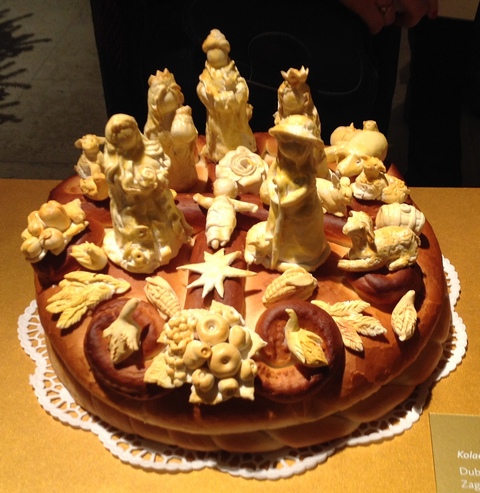  Jozefina Skenderović: Vila dužijance
Dr. Andrija Cvijin and his wife Gabrijela (information by Dr. Elizabeta Kovač Striko)
The Croatian Bunjevci
Writen by Ante Evetovic Miroljub, Petar Pekic and Ante Sokcic
Croatian Almanac 1986
Translated from Croatian and edited by Marko Puljic, USA BUNJEVCI are a Croatian sub-group, which one part colonized Lika and the Croatian Littoral, while the other part moved for the most part into Backa. As a whole group it is only this second branch which is considered, which is why the name Bunjevci is understood to be the Backa Bunjevci. The name Bunjevac is interpreted by writers differently. Fr. Marijan Lanosovic derives it from the river Buna near Mostar. These ideas are later represended by: Vuk St. Karadzic, Rudolf Horvat, Ivan Ivanic, Ivan Antonovic, Istvan Ivanyi, and Mijo Mandic. Even the Bunjevci's folk phrases say "Our grandfathers come afar - from the place of the Buna river". Fr. Martin Nedic states that the Bunjevci got their name from being followers of Pope Boniface's (Bunjo), similar to the early Christians being called Efazenics for being followers of Mark od Efeza. Radivoj Simonovic holds that the Bunjevci were first Vlachs who, to escape the Ottomans moved into Dalmatia where they accepted the Catholic faith. Bogoslav Kosovic derives the Bunjevac's name from the word "bunja" which was a specific type of house in which they lived. ... Fr. Antun Zorica alleges that in Dalmatia, the Bunjevac would scream "Hrkac" to a Serb, and he would return in kind with "Bunjevac" as a way of slurring him. Djuro Popovic states, that it is an insult and a scornful nickname. Vaso Glusac combines it, so that the word Bunjevac is the first sound of a Bunjevac, which came from saying verbs, or to speak something that you don't understand, like the Catholics who pretended to pray to God in the incomprehensable Latin language. That is how the Orthodox Chirstians called them to remind them of their guilt, who called the Bunjevci "rkacima". Ivo Milic has the same thoughts as well. According to him, with time the name lost its guilty connotation and became domesticated, as today it is used without offense. Stjepan Pavelic and Djuro Danicic believe that it is a name of obscure origins. Perhaps the most believable theory in which the name Bunjevac comes from, is the word Buna. In a Greek text, emperor Constantine Porfigenitus mentions in the Hum region the towns of Bona and Hlum. Which according to Jirecek, are two names for the same town. In the word Bona we find the main element of the name Bunjevac, which is the same as a Humian. Source www.croatianhistory.net/etf/bunjevci.html
| 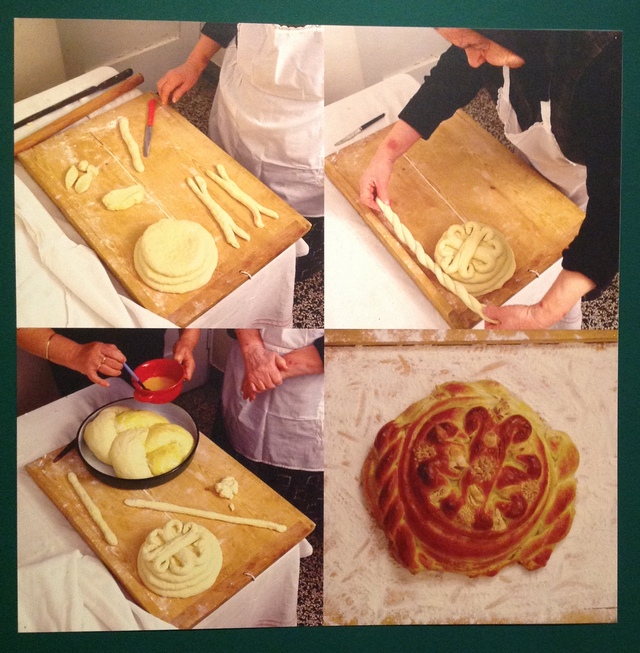  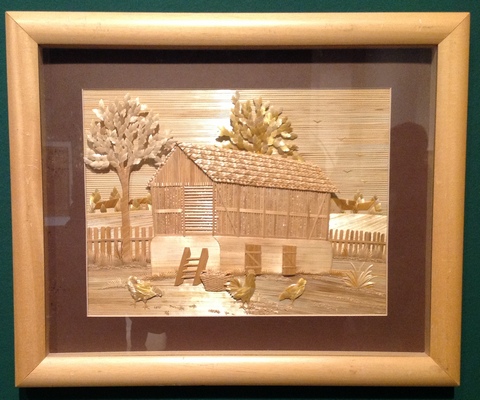 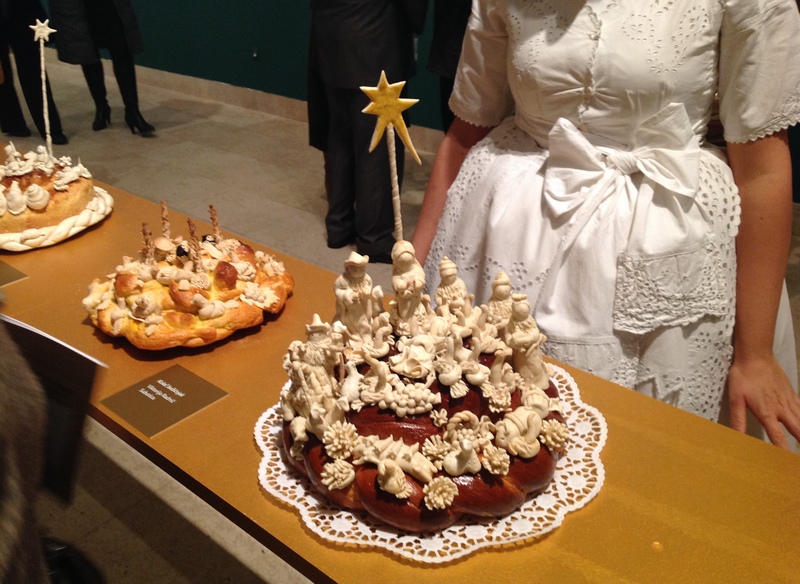 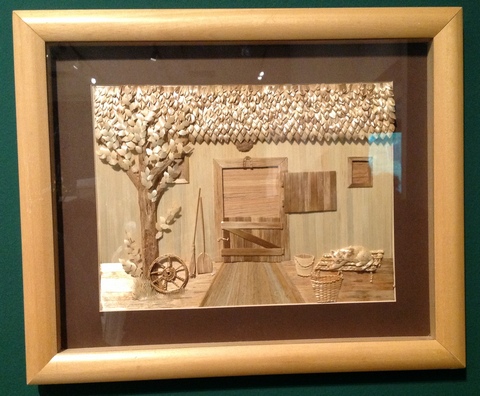 Marija Sarić: Drimež
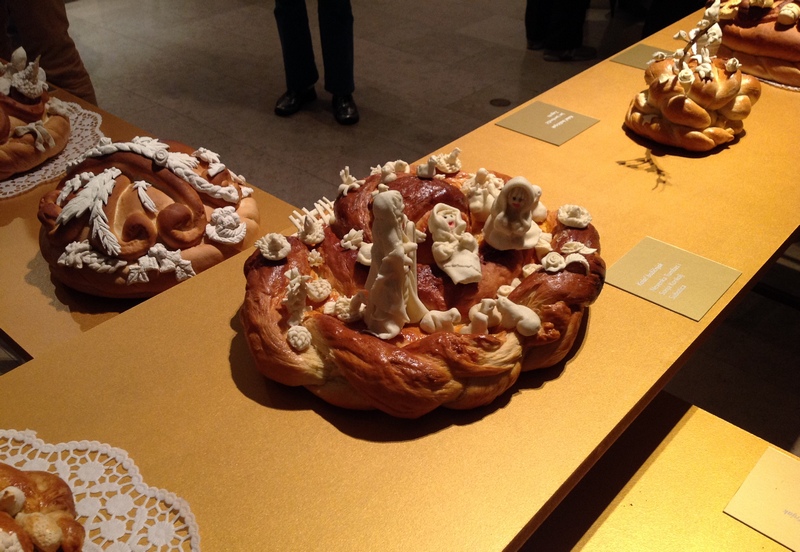
History of Bunjevci Croats
After the battle of Mohacs (1526) the majority of the Hungarian population out of fear from the Turks moved out of Backa and into northen Hungary, which the fertile and deserted plain enticed the new settlers from Slavonia, Bosnia, and Dalmatia. By 1565, among these settlers, one could already find the Bunjevac's last names in Subotica, however in historical documents, it is in 1620 that the Bunjevci are mentioned as Dalmatians. From that point on, there are more references to the Bunjevci in Backa, who in many waves moved from northern Dalmatia, Lika, and the Croatian littoral, and some from Bosnia, but their arrival is documented at the end of the 18th century. 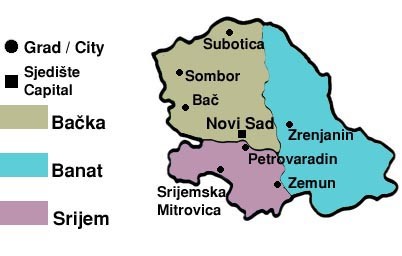 The main settling of Bunjevci into western Backa began in 1686 under the leadership of the Franciscans. So that the Vienna Royal house could have an army against the Turks, they gave the Bunjevci land, under the condition that they fight for the Emperor's army. Accepting that agreement, the Bunjevci began to settle in two main groups. The first settlers in 1686 were guided by the Franciscans, while the other group in 1687 were lead by the Bunjevac leaders Dujam Markovic and Juraj Vidakovic. They in the most part moved into northern and central Backa, while some moved into the Baranja, Pecs, and the Csongarad zupanijas. Their fighters were under the command of their captains, Luka Sucic, Dujam Markovic, and Juraj Vidakovic immediately passed into the emperor's army which were a big factor in pressing the Turks out of Backa. After the Peace of Karlovci in 1699, the Turks abandoned Backa, when the refugee police was organized, the Bunjevci costituted a considerable part of it. Faced with the frequent attacks by the Turks, they almost had to face another more greater peril. They were on the side of the emperor during the rebellion of Ferenc Rakoczyi in 1703, and they fought the more powerful Hungarian Kurucs, and suffered heavy losses so that a substantial part of the population had to move almost all the way to Srijem, while the Kurucs overran and horribly depopulated Backa. After the liberation of Buda (1686) the Bunjevci had repaired what the Turks had damaged. No the added speed of Rakoczyi's bandits, the so called Kukucs who expelled the Catholics. Fr. Jerko Guganovic had, in 1702 taken his faithful to Petrovaradin, where in that strong fortress they had lived for seven years. Afterwards the people had returned to rebuild their destroyed homes. It is a false assumption to say that the Bunjevci and Sokci Croatians were never Orthodox Christians. On the contrary, it is true that in 1899 that 1,200 Roman Catholic Sokci converted to Orthodoxy in Santovo. With the organization of a regular church administration, a new era had begin for the Bunjevci Croats. Bunjevac Education As with the other Croats, the schools of the Bunjevci in earlier times, were in the hands of the Church. They were divided into private, monastic, parish, and village public schools. It had remained like this until the Battle of Mohacs, when all the Catholic schools were destroyed. Only in a few places were schools able to be rebuilt. From the letter of a trader from Temesvar (Timisoara) of Feb 6, 1582 to Pope Gregory XIII, we learn that Fr. Antun Matkovic, a Bishop from Bosnia opened a school for the Bunjevci Croats. Fr. Marko Bandulavic, a Bosnian Franciscan built in 1631 a school and church in Karasevo. In 1650 the franciscans had thier own monastic school in Lipa, where 35 students had studied. After the major colonization of the Bunjevci in 1686, when the Bunjevci's regions were liberated from the Turks, new opportunities arose. The Franciscans remodeled old monasteries, and built new ones. Aside from monasteries, they opened their schools. Public schools were founded in the military frontiers. The organization was completed in 1703, so that in every major settlement there was a school. The Decree of Propagating in Sept 9, 1722, allowed the Franciscans to open a theology in Buda, and in Osijek on Jan 11, 1737. The first professor of theology in Buda was Fr. Anton Paulovic who was awarded for his deep knowledge in theological arts. The fundamental education began to significantly expand in the 18th century when the Bishops directed the parishes to open schools. Gabrijel Patacic, the Archbishop of Kalocs personally interjected in this, when, in 1738 he published by-laws for the of the regulation parishes. It was the Kantor's responsibility to teach the children. Wherever a parish was founded, a school was immediately opened. There were no regulated teachers. Studies were carried out either by soldiers or literate craftsmen. The systematic organization of scools was begun by Maria Theresa, and was completed by Jospeh II. In 1777, the empress, published the "Ratio educationis", which were founding rules for all national schools. The whole of Backa fell under the juristiction of the school administration in Pecs. The first administrator was Mate Rudic, chancellor and vice-zupan of Backa. These by-laws were in effect until the Hungarian revolution in 1848. Afterwards instruction was carried out according to the Austrian system. In 1855 an ordinance was passed in which grammar schools were divided into upper and lower. Every one had at least 4 grades. This ordaninace was in effect until 1868, when the law for national schools was passed. According to this law, every student had to acquire basic knowledge of their mother tongue. The law was liberal and good enough for the question of the national minorities, in actuality its guidelines were a dead letter on paper. In the schools only Hungarian was taught, while a tyrranical policy of Magyarization was carried out in all areas. In Subotica the first to stand against this tyrrany was Pajo Kujundzic. In 1894 he waged a tough battle for the use of the Croatian language. He took a proposal to the School Board, accused the Minister of Education, and sent a memorandum with 1,200 signatures of the most distingushed Croatian patriots. All this to no avail. It was then decided on the last step. In 1913, the First Bunjevac School Association, was founded in Subotica. Its goal was to allow the Bunjevci to open and maintain their own nation schools. The First World War swept away his nice and patriotic gift. Before the outbreak of the war, the Hungarian Minister of Education, allowed the teaching of Croatian in grammar schools. After the collapse of Austria-Hungary, the Bunjevci took their schools under control. In the meanwhile, the Bunjevci's professors and teachers were dispersed, and in their places came mostly Serbs. The Bunjevacki and Sokacki Croats had to wage a tough battle for their rights, with the collapse of "Yugoslavia" in 1941 entered a new phase. In Communist "Yugoslavia" Serbianism came in many waves, when in all the schools of Vojvodina Serbian and th cyrillic script were introduced. Source www.croatianhistory.net/etf/bunjevci.html
| 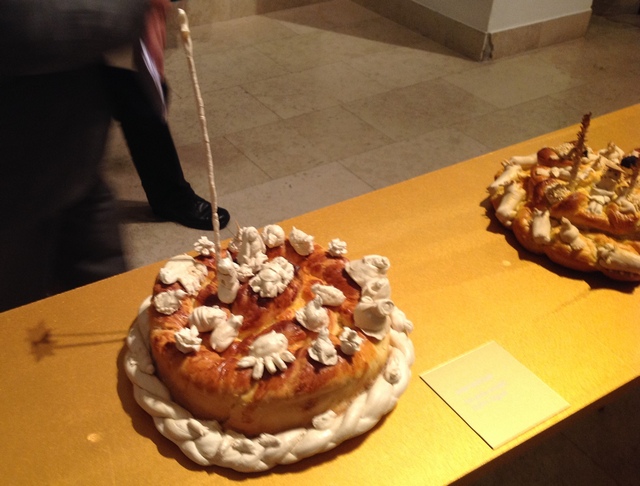 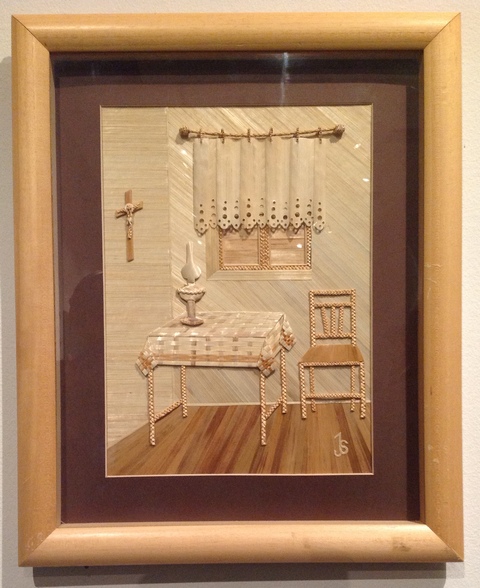 Jozefina Skenderović: Kutak tišine
Cultural and Educational Societies of Bunjevci Croats in Bačka
The first educational and societal organizations were formed in the latter half of the 19th century. "Pucka kasina" existed in Subotica from 1878. The orgnaizers wanted to call it "Bunjevacka Pucka kasina", but the Hungarian government would not allow it. The organization carried out work in the national and educational fields, and with it, gave material help to students. They publishen an almanac entitled "Klasje nasih ravni". Bishop Budanovic founded in 1934, "Subotica Matica", for whom a building was bought by the "Bunjevacke prosvjetne Matice". This instituation worked with the Zagreb organization "The St. Jerome Society", to distribute their books among the people, and had its own publications, among whom Subotica Newspaper, and the Subotica Morningstar calender. Societal life began to flourish in many organizations, which the more prominent ones were: Subotica Circle (founded 1895), The Catholic Reading Room of St. Vitus (founded 1905), The Catholic Reading Room of St. (founded 1910), The Bunjevac Humanitarian Organization (Subotica, 1919), The Catholic Reading Room of St. Roko, The Croatian Educational Society "Neven" (1920), The Croatian Choir Society "Neven" (founded 1920), The Bunjevacko momacko Kolo (founded 1920) and others. In Sombor the prominent ones were: The Croatian Cultural Society "Miroljub", and the Croatian Choir Society "Miroljub". In all Bunjevac parishes there were societies of Catholic action, importantly Krizari and Krizarice. Subotica, Durdin, Zednik, Tavankut, Sombor and Bajmok had Croatian halls. Among the athletic clubs, the most respected was Backa, which was formed in 1901.
Bunjevac Folklore The Bunjevac's folklore traits has many characteristics, which are found in other Croatian regions. The Costume is more or less taken from others during the time of Maria Theresa, however there were so many peoples, that the Bunjevci gave it their own characteristics which distingushed them from their Hungarian, German and Serbian neighbors. The men wear a hat, vest short coat, pants and boots. In winter they wear a fur cap, sheepskin coat, and sometimes they wore, during the year, a cloak with the national colors. Today only the shepards wear it. Before they wore very wide underpants under their boots. The woman's costume consists of a shawl on the head, many times with gold interweaving. Married women wear under their shawls a small hat. With that they wear a blouse (leves), long and wide dresses, so that they can look carry them easily and look better, around their waists they wore belts. Slippers were worn at home, the men's out of leather, and the woman's out of silk or velvet, commonly interwoven with gold or silk. A large scarf around the neck, made out of silk, wool or velvet, commonly with a decorative weave. At the dance, a woman would wear a long wide silk ribbon, which the men would hold onto. The material for the costume was factory produced. The women once wore shirts with puffed sleeves, which were embroidered with a certain type of weave from the domestic linen called "thin", the women's vest was silk, with gold hemming, and silver buttons. Their overcoats were mostly out of fur. The so-called "white costume" was worn on saturday nights when the girls went out, handmade white dresses, and the girl was bare headed. Sunday until noon, the girls were in overcoats, and afterwards they went to dances in their vests. Of the handicrafts today, only the weaving aprons and bedsheets which cover only small beds, was preserved. In the second half of the last century, bags with the national colors were woven, as well as napkins, and linen for shirts, etc. Fortunetelling is fairly widespread, particularly among the women. Most of the time it is harming someone with a curse or if they cast a spell. They will predict which will come first, a girl or boy, children, aven livestock, particularly at the younger ages. Men have to be particularly cautious, particularly those who have thick, connected eyebrows, because they may predict as well. Spells are cast through some bewitched object, which is usually placed at a crossroads, and will harm a particular individual, or whomever who crosses it. For example, money is rubbed in a wound, and the money is thrown over the head on the crossroads. Whoever takes it or walks on it, will be full of wounds, etc. With a corpse it is tradition that someone mourns. Only a cousin or one of the people present are allowed to mourn. Source www.croatianhistory.net/etf/bunjevci.html
| 
The Bunjevac dialect
The oldest writers who worked among the Bunjevci called their language the same name as other writes in other Croatian regions. Fr. Mihajlo Radnic said that he wrote in a Slavic-Bosnian language or an Illyrian idiom; Antun Jospi Knezovic calls his language Illyrian-Slavic; Fr. Emerick Pavic, Illyrian or dalmatian; Fr. Grgur Pestalic, Slavic; Ivan Ambrozovic, Dalmatian, etc. Meanwhile like other Croats, the Bunjevci called their language Croatian long before the First World War. The Bunjevci speak a Stokavian Ikavian dialect like the other Croats who speak Ikavian. The early Bunjevac writers from the very beginning used the Latin script. In the writing of letters they were under the influence of the Italians, Germans, and Hungarians. The diacritic marks were used when they were introduced into Croatian literature. A phonetic grammar was introduced in the Bunjevac literature by Fr. Lovro Braculjevic in 1730. In the preface of his book Uzao Serafinske goruce ljubavi (Budapest 1730), he corrects the way of writing: "Alie lipse, i pofahljiene pisati onako, kakose govori; jer stogodje od vise, nie fahljeno, vec kudjeno" this was written one hundred years before Vuk Karadzic. The national songs of the Bunjevci had the same origins as the other Croatian groups. The inspiration of the songs mostly originated in the bloody battles with the Ottomans. The gifted national singers sang about the important events in the lives of their people and were sung at all parties and gatherings. The songs were passed on orally among the people. That's how they maintained their ownership. Judging by thier contents, some songs had origins from their earlier homes. When the Bunjevci came into the northern areas, they brought with them thraditional weath and thier songs. Most songs originated from their new homes. The main heroes of these songs were the celebrated Captains from the Sucic and the Vidakovic houses. They also preserve some important events from our recent past. Even though there are many beautiful songs among them, nevertheless many of them are not as nice as the ones from their old homes.
Social events
After the defeat of Rakoczyi's rebellion (1711), the Bunjevci began to return to their abandoned homes. However, many wars and later contagious diseases decreased their numbers. During the time Maria Theresa, came better times, and the blossoming of materal weath from all sides. Many Bunjevci for their war service became enobled and became political and communal heads of Backa. Here was the beginning of political municipalities in northen and central Backa with exclusive Bunjevac characteristics. Subotica as the main Bunjevac settlement was proclaimed priveledge in 1743 a cameral city and received posession of 12 wild lands, which are today a source of weath, and Sombor which in 1749 was awarded the priviledge of a free royal town. However Subotica was not satisfied with these arrangements, and worked for complete freedom from municipal rule. That battle lasted for thirty years, and ended in 1779, when Subotica became a free royal city, and in honor of the Queen, received the name of Maria Theresopolis. From then on, Subotica began to develop quickly. Likewise, other important Bunjevac settlements began to bloom; Backi Aljmas, Baja, Bajmok, Bikic (Bacs-Bokod), Gara, Kacmar, Cantavir, St. Moravica, Lemesi (Nemes Militics), etc. In that time, central and northen Backa were populated exclusively by Bunjevci, who governed in the whole of the Zupanija. Their position was secured even the, when at the end of the 18th century the Germans, and later the Hungarians began to settle. Other events happened in the 19th century, with the Hungarian national revival. The Hungarians began to sucessfully endeavor to assimilate other peoples, so that Hungary would have a Hungarian majority. For even greater sucess of this plan, they began to systematically colonize Potis and central Backa with Hungarians. This mixing of Hungarians and Bunjevci meant the first step in denationalizing the Bunjevci. In particular, many Bunjevci in central Backa were denationalized, among them a portion of the nobility and the majority of the intellectuals. It was against this situation that the Bunjevci met the Hungarian revolution of 1848. Under the circumstances, the Bunjevci in most part sided with the Hungarians. During the riegn of absolutism, when the Hungarians did not have any influence in public life in Vojvodina, the Bunjevci did not feel any threat of denationalization. However, after the agreement between Vienna and Budapest (1867) the Hungarians, through education attempted to assimilate the Bunjevci, which had a fierce reaction by Ivan Antunovic and others. The First World War only strengthened the national conciousness of the Bunjevci. At the end of the war, they held a national convention in Subotica Oct 10, 1918, on the foundation of self determination, arrived at a decision to become a constituent part of the state of the Serbs, Croats and Slovenians, while Oct 25, 1918 in Novi Sad, together with Serbs, Slovaks and Ruthenians announced the formal secession of Vojvodina from Hungary. In the new state the Bunjevci were well aware of their Croatian origins and fought against the asprirations of the "Greater Serabians" who negated the Croatian heritage of the Bunjevci. That battle continued until the collapse of the first "Yugoslavia" in 1941, and resumed in the new Communist "Yugoslavia". Source www.croatianhistory.net/etf/bunjevci.html
| 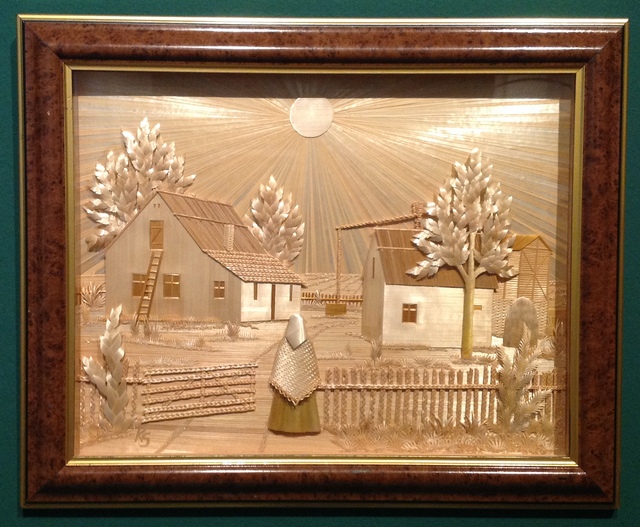  Đurđina Vidaković Hanađ: Hortenzije
Branka Vujić: Jabučice na visokoj grani
Jelena Balzam: Kada ujutro sunce grane
Edita Bačić: Krušna peć
Erika Virag: Majka Božja
Religion and religious events among the Bunjevci Croats
Bunjevci and Sokci, who in 1241 arrived in their present day regions, found there an older Slavic element. The new settlers and the old inhabitants were from the beginning members of the Catholic church. The Franciscans of the Bosnia Vicariat are mentioned as the first spiritual caretakers of the Bunjevci and Sokci. In 1260 Fransican monastaries are mentioned in: Bac, Darda, Monostor, and Buda, and in 1400 the monastery in Baja. Fr. Ivan from Baja was a Bosnian Vicar from 1438-1444. Fr. Fabian from Bac, received from Pope Eugene IV the authority of the Inquisition, and was a Bosnian Vicar from 1445-1447. After the Battle of Mohacs the Fransicans with their believers bear great expulsions. In Budim, Fr. Andrija Ilocanin falls into Turkish hands. Fr. Djuro Milovan continues in 1535 as a confessor to the Bunjevci in Szeged. In 1643 in Karasevo the Guardian is Fr. Ivan Dezmanic, and Fr. Stipancic in Lipa. In 1647, Fr. Solo Barilovic is the Guardian in Secen, where the "Dalmatian" clerics ended Bogumil studies. Fr. Martin Ibrisimovic, the Bishop of Belgrade handed out the sacred affirmation in 1647 in Martonos, Bajmok, Jankovac, Santovo, Backi Breg, Koluta, Sombor, Bac, and Bukin, as did in 1656, Fr. Rafo Jambrehovic in Pecs, and Fr. Stjepan Milic in Tukulija. However the religious situation was in those times, the letter of Fr. Mihajlo Radinic, which he as the provincial sent to Rome the is the best example of the situation in Backa. He states "For 4 years our province is dying. Many of our brothers have been killed. Many have been imprisioned in prisons and have died. Our monasteries and churches are in ruins, religious objects have perished. We will maybe move any day now. We have been hiding for many days and nights in the thic forests, and there is no one in these surroundings who will comfort and fill our spirits." The same Fr. Mihajlo Radinic was in 1686 the main organizer of the last movement of the Bunjevci in their territories. Fr. Andrija from Dubocac, was distingushed for his spiritual work, took over the move in 1693 and became the Guardian in Buda. After the liberation of Buda (1686), the Bunjevci repaired what the Turks had destroyed. On the fast onslaught by Rakoczyi's bandits the so-called Kuruci expelled the Catholics. Fr, Jerko Guganovic took his believers to Petrovaradin in 1702, where they lived in that strong fortress for seven years. Afterwards the people had returned home, where they rebuilt their destroyed homes. It is a false assumption to state that the Bunjevci were ever Orthodox Christians. It is true, however that in 1899 in Santovo, 1200 Catholic Sokci converted to Orthodoxy. The organization of the a regular church administration began a new era for the Croatian Bunjevci.
The ties of Bunjevci to other Croats
Until the so-called peace at Karlovac(Karlowitz), the Bunjevci were in their composition, narrowly tied to the remaining Croatian regions which were under the Ottoman Empire, but in particular with Slavonia and Bosnia. The same dialect and the same books were used by the Bunjevci as well as the Slavonci and Bosanci. The old ties among them were not severed, even when the Bunjevac regions were incorporated into the Hungarian state. Kacic's "Pleasant Conversation" and Reljkovic's "Satire" were favorite reading among the Bunjevci. During the Croatian national revival, Bunjevci were followers of (Ljudevit) Gaj, and some of (Ban Josip) Jelacic. Afterwards, Bishop Antunovic supported active ties with Bishop Storssmayer, Ban Mazuranic, Franjo Racki, and other Croatian patriots. He enticed Captain Murgic to write about the Bunjevci in Lika. Despite great persecution, the Bunjevci supported their books and newspapers, and also accepted books from Zagreb, books from Matica Hrvatska, the St. Jerome's Society, and the Young Spititual Choir. In return, they ordered an edition of Bunjevacka Vila, and later Neven to the Banovina. Some Zagreb writers were frequent contributors to the Bunjevci's newspapers. In 1904, Ban Mazuranic, Dr. Alaupovic, and other Croatian notables, visited the Bunjevci in Subotica. In 1913, an association for Bunjevci and other Croatian university students called "Antunovic" was founded in Budapest. The Pest Acedemic Society "Perun", had Bunjevci among its members. Ante Evetovic (Miroljub), the poet, praised the Croatian name, and was well known throughout the Croatian regions. From November 10, 1918, when the Croatian Bunjevci carried the Croatian flag through Subotica, the mutual ties between the Bunjevci and other Croats have grown stronger. The biggest manefestation of the unity between the Bunjevci and their Croat brothers was the majestic celebration in Subotica on August 14-16, 1936, as a rememberance of the 250 anniversary of the settling of one group of Bunjevci.
Bunjevci Croats
Source www.croatianhistory.net/etf/bunjevci.html
|  Marija Vojnić: Reduša
Marija Dulić: Nestašluk tri vrapčića
Ana Milodanović: Oluja
Edita Petrekanić Bačić: Pogled
Kristina Kovačić: Razigravanje
Please, go to the next page below!
|
|
|
|
|